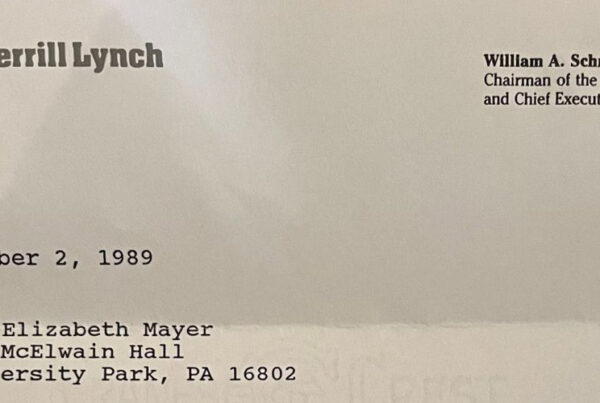
Article Summary: Deliberate small talk differentiates you. We all recognize relationships take time. Each opportunity you have to touch your prospect is an opportunity to accelerate success. Small talk is an effective way of making a positive impact. Your challenge is balancing small talk and business talk with the stated or unstated preferences of your Key Decision Makers (KDMs). Effective small talk demonstrates attentiveness, positive listening, and genuine interest. It enables the conversation to go beyond the nuts and bolts of pure business. It enables you to connect on a personal level as well by building rapport. If you win on price, you will also lose on price. You have to differentiate yourself. Forming personal bonds is crucial to winning most contracts. Why? Because business is personal.
Business is Personal – 3 Tips to Build Rapport in Sales Meetings
Copyright © 2009. The Chief Storyteller®, LLC. and ThinkBusiness Magazine
Ira J. Koretsky
September 2009
Relationships are not built in a vacuum. They are collaborative efforts, established one moment at a time. Deliberate, well-crafted small talk conversations accelerate bonding and rapport. Imagine this: you made a great first impression on the telephone with William, CEO of a Fortune 2000 firm. A few days later, you are on your way to the follow-up meeting at his office. Are you prepared for your “second” impression?
Early in my career, I thought I prepared well for the second meeting. In reality, I only prepared for part of the meeting—the conversation related to the offering. I did not prepare well for the human side—the bonding and rapport.
Many people complain that small talk is a waste of time, that is feels forced and fake.
On the contrary, small talk is essential to building rapport and establishing a relationship. By following the suggestions below, small talk becomes a powerful part of any sales meeting. The difference between effective and ineffective small talk is being deliberate. Deliberate small talk done well accelerates connection. Small talk contributes to sales and customer service success every time you meet with prospects and clients.
There are several types of small talk. Edmondson and House (1981) describe the most common type as the words exchanged before transitioning to “business talk” (see end of article for references). Business talk is talking about the agenda items. Drew and Chilton (2000) define another type as simply “keep in touch.” Saftoiu (2006) presents a third type as “transitional” small talk. Transitional “consists of short conversations inserted within business talk…to check on the state of the relationship and to release some of the tension that heavy topics might have brought up.”
The best sales professionals are well prepared for various types of conversations. Here are three suggestions to make small talk an important part of your sales toolbox.
1. Develop a List of Questions
Always perform competitive and business intelligence research. This is the most important part of small talk success. Research both the organization and all of the attendees, especially the “Key Decision Makers” (KDMs). Develop a master list of statements and questions relevant to your meeting attendees, sorted by priority. Regarding personal questions, your interest must be genuine (insincerity is quite easy to discern).
For the organization, know its competitors, products and services, history, recent successes, future challenges, and the like. For the sales meeting attendees, look for genuine common interests. Examples include where someone grew up, attended school, and their hobbies, charities, and professional associations.
There are many valuable resources out there to help you in your research. Internal resources include the organization’s website, press releases, annual reports, interviews with executives, conference presentations, biographies, and investor presentations. External resources include Hoovers, Gartner, Forrester Research, LinkedIn, Twitter, Digg, Slideshare.net, Internet search engines, blogs, newspapers, magazines, and journals. Now your conversations are targeted and deliberate.
2. Gauge Receptivity
Understand and tune into the KDM’s personality. Does William prefer small talk or business talk? Unsure? Dip your toe into the pool. Follow William’s lead. Whatever his preference, you are prepared to build rapport.
Start-of-meeting small talk should last only a few minutes. If William does not provide timing cues, then you should transition to business talk within five to seven minutes.
Transition to business talk within five to seven minutes.
Since you did your pre-meeting preparation and research on the organization, your deliberate small talk complements the agenda. Your small talk continues to be relevant and important to the meeting. It establishes your efforts to understand and gain familiarity with William and his organization.
3. Share and Ask
Let us assume there are several people attending your meeting. As soon as you walk into the conference room, you discover William is running late. Begin your bonding and rapport with the folks in the room with your prepared list of statements and questions. As you initiate conversation, remember the key to successful small talk is “share and ask.”
Based on your research, share something important about yourself relevant to your KDM. Then ask a related question. By sharing something about yourself first, you exhibit positive signs of trust.
Examples:
- “Margaret, I am also active in XYZ association. How are your experiences with XYZ?”
- “Arun, I graduated from EFG University with an MBA in 19XX. I noticed that you went to LMN for your MBA. What did you like the most?”
- “Sofia, I read in the Wall Street Journal about your new [blank] initiative. We did something similar a few years ago. I’m curious, how is this initiative progressing?”
The answers will likely offer insights into how the KDM thinks. The right small talk can uncover information about potential cross-selling opportunities for their future product launch, new customer service strategies, and more.
Deliberate Small Talk Differentiates
We all recognize that relationships take time. Each opportunity you have to touch your prospect is an opportunity to accelerate success. Small talk is an effective way of making a positive impact. Your challenge is balancing small talk and business talk with the stated or unstated preferences of your KDMs.
Effective small talk demonstrates attentiveness, positive listening, and genuine interest. It enables the conversation to go beyond the nuts and bolts of pure business. It enables you to build rapport and connect on a personal level as well. If you win on price, you will also lose on price. You have to differentiate yourself. Forming personal bonds is crucial to winning most contracts. Why? Because business is personal.
References
– Willis Edmondson and Juliane House, Let’s Talk and Talk About It. A Pedagogic Interactional Grammar of English, 1981.
– Paul Drew and Kathy Chilton, Calling Just to Keep in Touch: Regular and Habitualised Telephone Calls as an Environment for Small Talk, 2000.
– Razvan Saftoiu, Laughter in Small Talk: Aspects from Romanian Interactions, 2006.
Contact us to learn more about better engaging your audiences with our communication, marketing, sales, and storytelling keynotes, workshops/training, coaching, and services.
Read More ThinkBusiness Articles
- When Nobody is Looking, Character Still Counts – Make Your Business Stories Credible (read)
- Shoulda, Woulda, Coulda – 5 Activities You Really Should Do (read)
- Business is Personal – 3 Tips to Accelerate Relationship Building with Small Talk (read)
- Make Networking Pay Off – How to Find the Right Events for You (read)
- The Art of Listening – 5 Ways Active Listening Improves Your Sales Success (read)
- Before You Make that Call – Use Research to Stand Out from Your Competition (read)
- Treat Everyone Like a Key Decision Maker – How Improvisational Humor Training Helps You Sell (read)
- Avoid Foot in Mouse Syndrome: Write Emails that Generate Results, Part 1 (read)
- Special Delivery: How to Write Emails Audiences Will Open, Part 2 (read)
- Networking as a Sales Tool – 5 Sure-Fire Steps to Increase Sales Success (read)
- Thinking of Going Global? Use Social Media to Accelerate Your International Success (read)
- Better Blogging for Better Results – 8 Tips to Generate Opportunities from Blogging (read)
- The “What Do You Do?” Answer – A Key Tool in Your Sales Toolbox (read)
- Business is Personal – 3 Tips to Build Rapport in Sales Meetings (this article)
- It’s Who Knows You – 3 Little Known Ways to Turn LinkedIn into a More Valuable Tool (read)
- Keep Your Top Customers Forever with Internal Champions, Part 1 (read)
- Keep Your Top Customers Forever with Internal Champions, Part 2 (read)
- Life Lessons – Everything I Learned About Sales, I Learned From My Parents (read)
Updated Content 2012, Updated header photograph 2019
Photography Source: Photos.com
#chiefstoryteller #storytelling #leadership #executivecommunication



